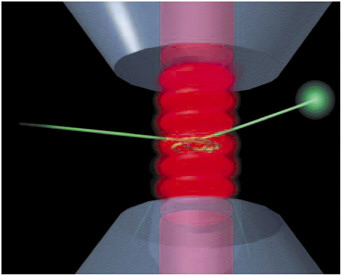AMO Science Enhancing National Defense
AMO Science, National Defense, and Security
Lasers can deliver large amounts of power at long distances almost instantaneously. These exotic qualities of laser weapons seem to belong more to the world of science fiction than to the world of national defense. But the same properties that have made lasers indispensable tools in industry and medicine also make them especially useful tools for the military. Advances in laser science over the past decade have led to increased security (see box “Homeland Security”), better defense, and improved military preparedness in many areas. Many of the advances needed for national security have come out of civilian research programs; conversely, many of the advances from national security-related research programs have had a significant impact on civilian technologies. Here the committee describes just a few of the AMO science advances that have contributed to our national defense.
Imaging Through a Turbulent Atmosphere
Scanning the evening sky in the early 1960s one might have caught a glimpse of the Echo satellite as it passed overhead. Today’s near-Earth orbits are filled with communications, military, and research satellites. Being able to see an adversary’s satellites is an important national security priority. Optical telescopes, no matter how powerful, are limited in their resolution by atmospheric turbulence. Now, lasers and atomic physics are changing that. One approach to overcoming the problem of atmospheric turbulence is through the use of atomic physics and the technology developed originally for high-power lasers.
In one such application, called Guide Star, a powerful laser is directed skyward to more clearly resolve images of satellites in Earth orbit. As it propagates through the atmosphere, the laser beam encounters a layer of sodium atoms at an altitude of about 50 miles. Formed by the breakup of meteors entering Earth’s atmosphere, the sodium atoms in the layer absorb and then reemit some of the light, which appears to an earthbound telescope as an artificial magnitude 7 star (a factor of 100 weaker than Polaris, a magnitude 3 star). This light intensity is too weak to be observed by the naked eye but more than sufficient for our purposes. If the artificial star is located at about the same position in the sky as a passing satellite, then light from the object and light from the artificial star will both be subject to the same amount of atmospheric distortion. One can calculate what the artificial star should look like in the absence of atmospheric distortion. Consequently, a telescope equipped with a deformable mirror that is viewing both objects can change the shape of its mirror under computer control to correct the image of the artificial star for the effects of atmospheric distortion. In doing so, it also resolves the image of the passing satellite. Satellite features as small as a basketball 1,000 miles away can be observed using this system. Such
|
HOMELAND SECURITY 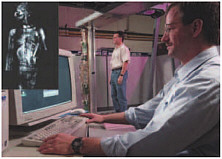 Three-dimensional imaging (holographic) and scanning technologies improve hands-off detection. The events of September 11, 2001, made us recognize that the United States is vulnerable to new threats to the security of its people, economy, and infrastructure. These threats go substantially beyond traditionally recognized concerns. To anticipate, respond to, and prevent future occurrences of the type that took place on that day, the United States is creating an administrative structure called Homeland Security. Responses to potential threats include the creation of systems capable of securing our nation’s communication systems from infiltration, safeguarding our transportation systems from disablement, and preventing harm to our people from various weapons, including chemical and biological agents. Technologies enabled by AMO science continue to make communications faster and cheaper, and the use of new cryptographic codes based on quantum physics rather than classical physics promises to better protect our national information infrastructure from unfriendly intrusions. AMO science continues not only to make our more traditional defense systems better but also to give us increasingly sophisticated and effective sensors for the early detection of threats to both civilian and military populations from chemical and biological agents. AMO science’s continuing progress in detection systems offers a significant boost to the development of early and effective countermeasures against such threats. |
good resolution has allowed improved identification of satellites and their closer scrutiny, enabling us to more clearly determine their intentions and functions.
Lasers and Atomic Physics Help Achieve Nuclear Arms Reduction and Safeguard the Nation
Nuclear nonproliferation is one of our most important national security goals. One of the challenges of the nonproliferation effort is how to assure the safety and reliability of our remaining nuclear weapons, an effort known as stockpile stewardship, without having to resort to testing through the detonation of nuclear warheads. Advances in AMO science have aided this effort, particularly in two areas: (1) the development of large solid-state lasers that can help simulate conditions found in thermonuclear explosions and (2) the formation of more accurate theories of how atoms behave at high temperatures and pressures.
One of the reasons lasers are an exciting tool in the laboratory is their capacity to concentrate energy in space and time in the form of focused high-intensity beams of coherent light. This capability has led to the development of several new types of experiments, including programs that began in the early 1970s whose aim was to simulate small thermonuclear detonations in the laboratory. Continued progress eventually led to the construction of what was then the world’s most powerful laser: Nova (Figure 12). Nova was capable of generating power equivalent to several hundred times the electrical power output of the United States for about one billionth of a second. The first laser to achieve the conditions needed for thermonuclear fusion in its focus, it gave the nation the potential ability to study aspects of nuclear weapons without conducting tests.
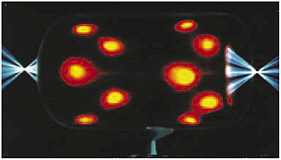
FIGURE 12 The Nova laser heats a hohlraum target to several times the temperature of the Sun.
The physics of nuclear weapons is very complicated and not completely understood. In the past, underground nuclear tests were conducted to determine how weapons would work. Now that testing of nuclear weapons has stopped, our nation’s security depends on learning how to predict their performance through numerical simulations and experiments not involving the detonation of weapons. To study conditions inside a thermonuclear explosion, ten powerful laser beams are focused into a small, hollow gold cylinder about the size of a dime. Each cylinder contains a small BB-size capsule filled with a small amount of nuclear fuel. The multiple laser beams enter from both sides and impinge on the inside of the cylinder.
This vaporizes the gold and creates intense x rays, which compress the capsule. The total energy contained in the beams is typically about 40,000 joules. Although this is equivalent to the energy released from burning only 1 gram of coal, it is delivered in such a short period of time and in such a small volume that the fuel inside the test sample is heated to several hundred times the temperature of the Sun.
Data from experiments with Nova have improved our understanding of the underlying physics of dense heated matter and what happens during a nuclear explosion. These results are being used to test computer calculations of atomic processes like turbulent mixing and x-ray opacity. This provision of experimental data for the confirmation of numerical simulations is an important contribution that AMO science makes to our national security as we strive to reduce the risk of global nuclear war. Future projects such as the National Ignition Facility laser, currently under construction in California, will continue this partnership in the 21st century.
Laser Range Finders and Target Designators
Lasers and optical technology have had a major impact on conducting modern warfare while minimizing unintended damage. Laser technology has helped in two significant ways, precision range finding and target designating, allowing the substitution of precision for quantity (force).
The laser range finder for tanks and aircraft has been used extensively for 30 years. The combination of laser range finders, which have an accuracy of ±60 centimeters out to a distance of 10 kilometers, and infrared sensors has made tanks a formidable mobile artillery weapon. The military edge gained from this combination, called a force multiplier, makes U.S. tanks up to five times more capable than the less advanced tanks of adversaries.
For aerial bombing missions, the laser range finder plays a different role: It becomes a laser designator for ground targets. This advance has led to remarkably improved target accuracy. While it is possible to build very precise bomb aiming and release mechanisms and bombs with finely designed aerodynamic characteristics, the wind in the atmosphere between the aircraft and the target is unpredictable and limits the accuracy of a bomb hitting its target. With the accuracy of targeting typically decreasing by ±50 meters for every kilometer of altitude, true precision bombing without the use of laser designators could only be achieved by bombing at very low altitudes to minimize the effect of wind. Low-flying bombing runs make an attacking aircraft an easy target for modern antiaircraft defenses. Retreating to safer altitudes above the range of groundlaunched missiles and antiaircraft fire, typically 10 kilometers or higher, leads to an average targeting uncertainty of 500 meters or more. The potential for unintended casualties would be unacceptable.
Laser target designators have changed this situation completely. The designation is done by shining a laser beam on the target, often from an airplane located outside the range of the aerial defenses. Sensors inside the bomb detect the reflected light, which enables automated steering for precision strikes. A number of variations on this theme, such as guidance from observers on the ground, have given us the ability to provide close bombing support for friendly forces that are under attack. Moreover, this increased accuracy means that a single, moderate-sized bomb can give a better result than multiple strikes with larger, nonguided bombs. It minimizes the number of missions necessary and the amount of damage to unintended targets.
Laser Technology for Theater Missile Defense
Directed energy weapons such as space- and land-based lasers were considered potential weapons for destroying incoming ballistic missiles during the late 1980s as part of the Strategic Defense Initiative. Lasers can deliver lethal doses of energy over long distances with minimal delivery time (i.e., the speed of light). Electrically excited lasers, including carbon dioxide lasers, free electron lasers, and chemical lasers such as the HF/DF and the chemical oxygen/iodine laser (COIL), have been considered as potential systems (Figure 13). Key issues in the development of laser-based missile defense systems for target destruction are laser power; laser efficiency; laser wavelength, which determines the size of the final focusing mirror; the engagement distance to the target; and the need for corrections for turbulence in the intervening atmosphere. While no weapons have yet reached the level of maturity needed to field them in a combat environment, billions of dollars are being invested to continue research into systems that could be developed for deployment. AMO science and scientists are contributing significantly to this effort.
Airborne Lasers
Following the deployment of the Patriot theater ballistic missile (TBM) as a defense against SCUD missiles during the Gulf War, the airborne laser (ABL) project was initiated to investigate alternatives to the use of TBMs on and off the battlefield. As conceived, the ABL will be a high-energy COIL carried aboard a modified Boeing 747. Sensors on the plane will locate and track missiles soon after launch. If a missile is hostile, the laser will be aimed and fired at it, destroying it in its boost phase near the launch areas. The ABL will be capable of producing a beam to deliver several tens of kilowatts of continuous or pulsed power and projecting the beam up to hundreds of kilometers away, using optics that employ deformable mirrors to compensate for intervening atmospheric turbulence. Other potential applications of laser weapons, either on the ground or mounted on an airborne platform, include the destruction of short-range rockets.
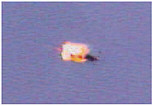
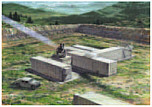
FIGURE 13 Katyusha rocket being destroyed in midflight (left) using a DF laser beam from the facility shown in an artist’s rendering (right).
Development programs for other laser weapons are not likely to result in a reliable system for several years. Formidable challenges remain, including the successful delivery of sufficient energy over long distances through an absorbing and distorting atmosphere and the field reliability of lasers. AMO science will play a central role in developing the systems and technologies that might lead to deployable weapons systems.

